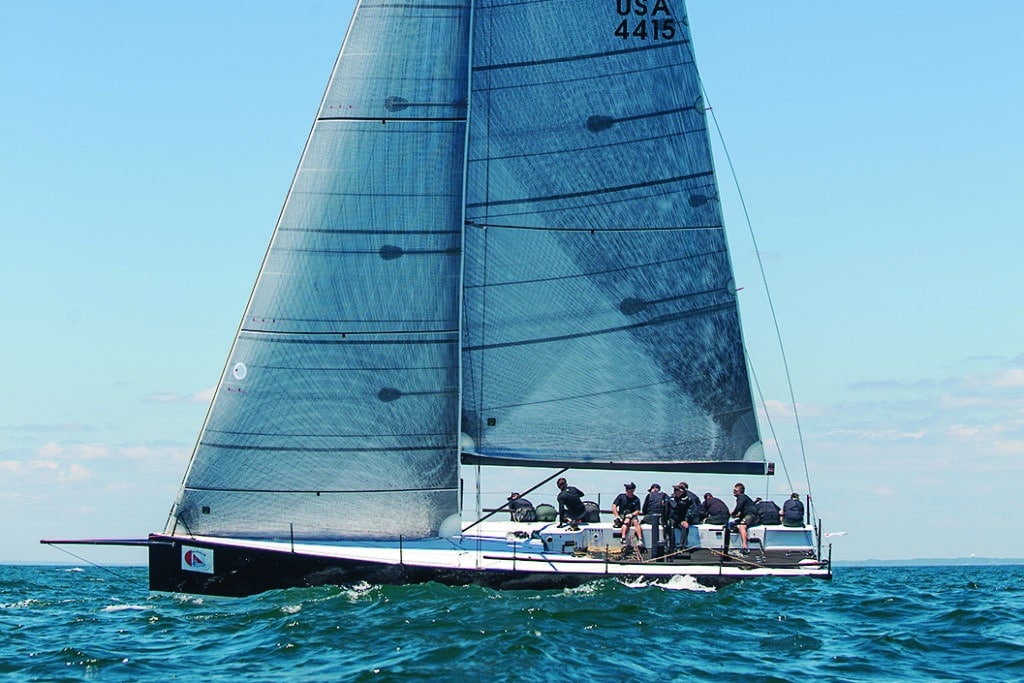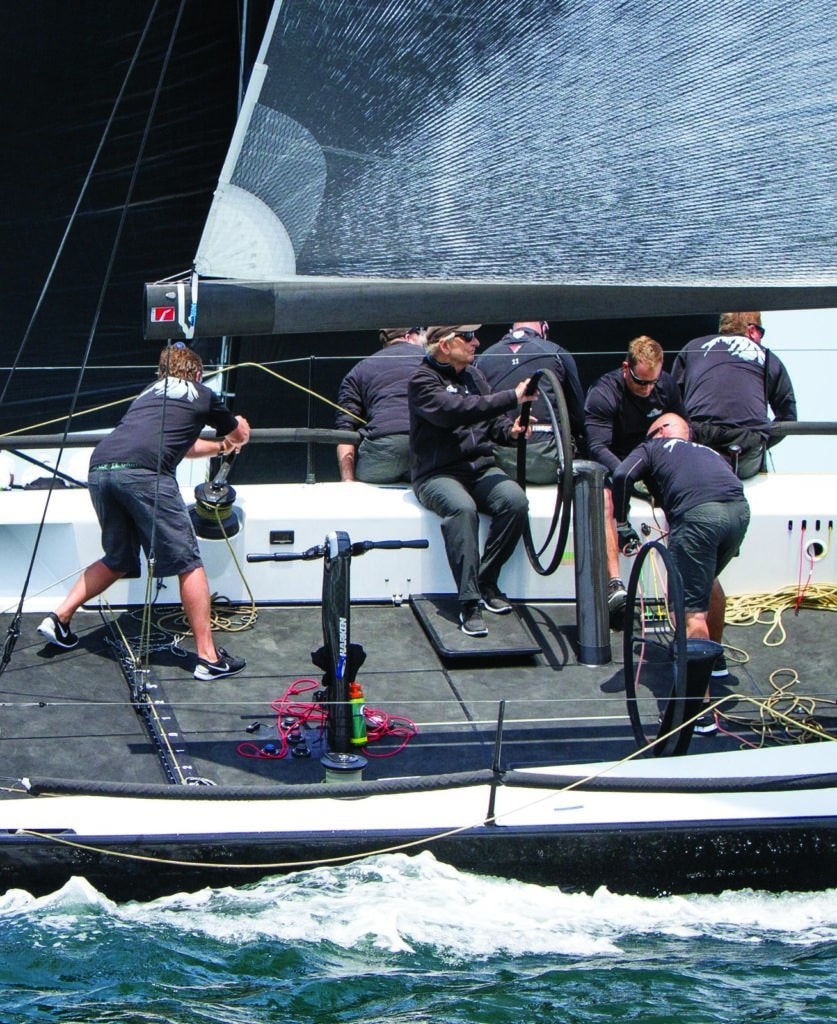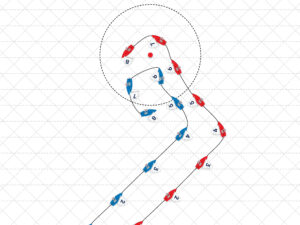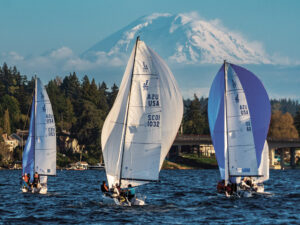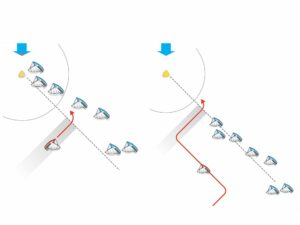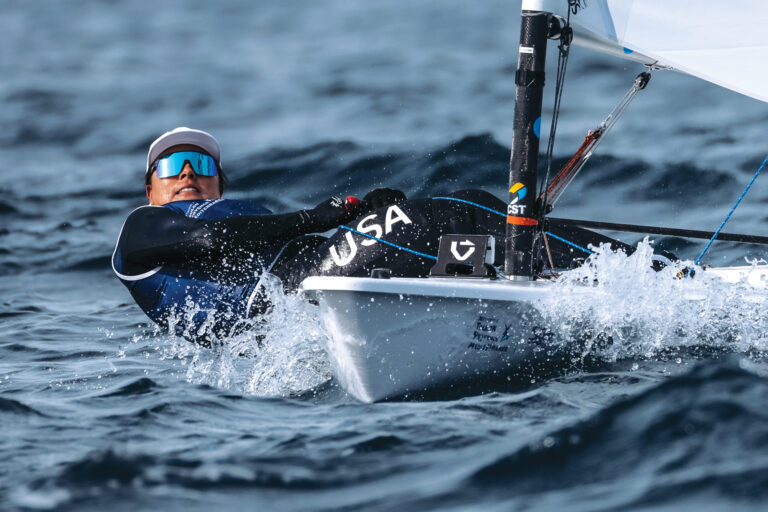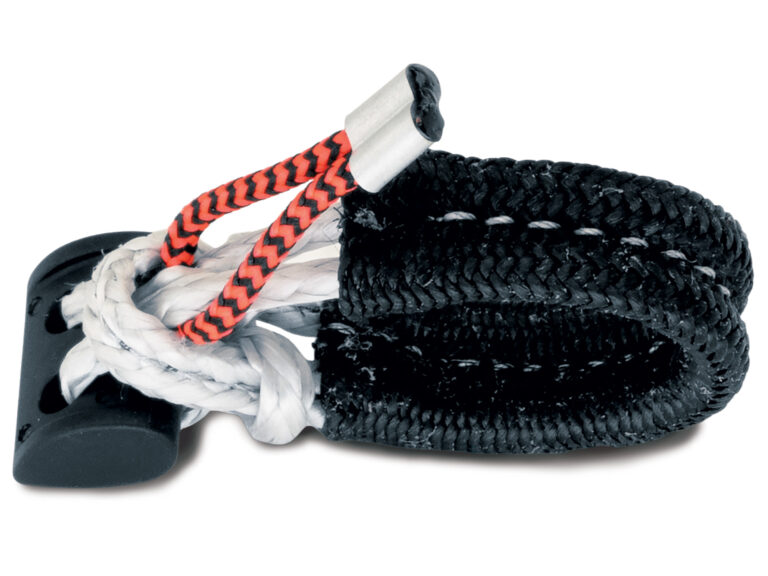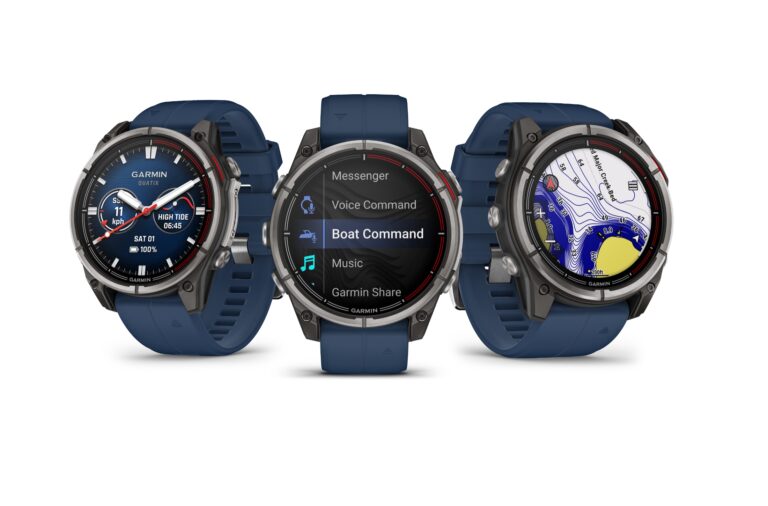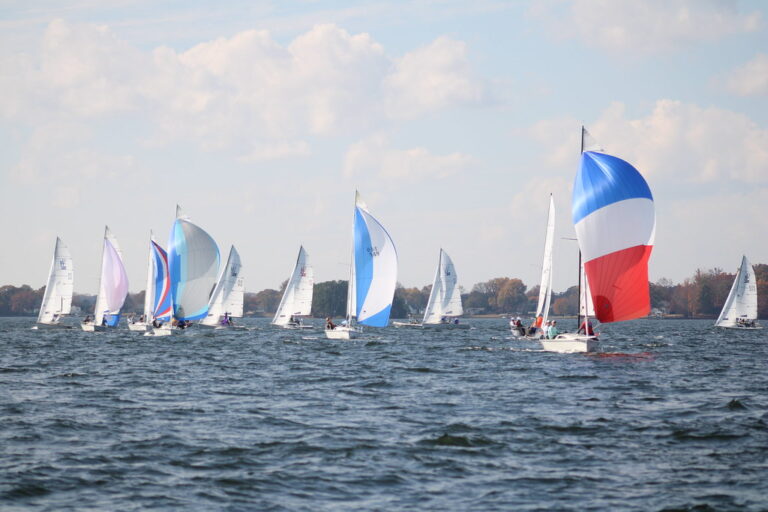Austin and Gwen Fragomen are happy owners. Their new custom 44-footer, Interlodge IV, won its first race four days after touching water for the first time. Then it won every major regatta that followed. Pretty good for a program that was simply an idea nine months earlier. How does a program go from concept to victory so quickly? It has a lot to do with how it was conceived and executed.
Identifying a Bucket List
The first question when organizing any program is always, what’s on the bucket list? Usually, no one knows exactly, but this is the most important question. It’s far easier to create a winning boat if you know exactly what you want to do with it. Fortunately, Austin knew where he wanted to take a new boat in 2015, and which specific events he wanted to sail. With this in mind, the team’s boat captain, Kris Matthews, and I did a market study. The easiest route would be to just buy an already built boat and modify it. However, we didn’t see anything out there that truly fit Austin’s plans and had the potential to win the targeted events. He enjoyed the excitement of the 52 but wanted something smaller. This put us on the path of building a 44-footer.
Assembling the Experience
When starting a new program, get good people involved early. Of course, if you’re building a boat, there’s the designer, the builder, the mast designer and the sail designer. We hired the same designer, Marcelino Botin, as the TP52 Interlodge III; contracted New England Boatworks to build the boat; and used Hall Spars and Quantum Sails. You also need the sailors — who are going to be holding the sheets, pulling up and down on the sails, and turning the winches — to be part of the decision-making right from the start. Then there’s an owner’s representative: This person is essential because the owner may not want to be involved in every little decision.
Matthews played this role. For example, the designers wanted a T-flange keel, which is the most efficient for weight savings, but requires a lot more time to assemble and disassemble. Matthews therefore decided to put a socket through which the keel head fit in the bottom of the boat. The boat goes on top of the keel head and pins it in place. This improvement cost a few thousand dollars, but the boat can now come off its keel and be shipped to an event and ready to sail in just a couple of days.
Another example is the rigging systems. Matthews and team rigger Jamie Haines went to school on all the new 52s. They decided how the boat was going to be rigged, went to the designer with this information before the hull mold started, and designed the interior structure around this knowledge.
Studying the Sailing Venues
Next we studied the conditions in which we’d likely be sailing. This helped inform the designer about what we would need to perform well. We combined that information with what we knew from personal experience about our intended venues. For example, we spent the summer of 2014 sailing the TP52 in Newport, Rhode Island, and in every regatta, the wind was less than 10 knots. If the wind was offshore post-frontal, it would be breezy in the morning, but by the time we started, around midday, it would drop quite a bit. We usually started around 11 a.m., and if we had a sea-breeze day, the first race would be in light air. The race committee was usually anxious to start races, so there were often several races in winds less than 10 knots. By the last race of the day, the wind would be up to around 14. When we sail in Florida — at Key West, for example — it’s generally light, or if it is breezy, the sea state is still relatively flat.
It was clear we’d be OK with a light-air boat, and we confirmed as much in our conversations with the designer, who said it’s easier to make a light-air boat good in heavy air, than a heavy-air boat good in light air. Our conclusion was that the boat should be targeted for 8 to 9 knots but still be competitive in stronger breeze.
Dealing with Measurement Rules
It was unclear whether we’d be sailing the 44 under HPR or IRC — or both. We also knew we eventually might be sailing under ORC. Consequently, the boat was designed as a compromise between HPR and IRC. If we targeted one rule and that rule disappeared in a year, the boat would be obsolete, so we wanted to make sure that didn’t happen. IMS used to be a very secret rule, and IRC is still a bit that way, but measurers are now working more closely with designers so designers have more tools to use. The 44 was therefore designed with two rules in mind, which perfectly aligned with Austin’s design brief. Plus, he wanted a fast boat; he really enjoys the 52 because it’s fast and fun. We had to make sure we ticked that box.
Forming a Team
Because both measurement rules had restrictions about the number of crew, we had room for only two grinders on the 44. That meant, for spinnaker takedowns, each grinder would be dealing with around 360 square feet of material. Having a couple of big guys was essential, so we brought in two strong grinders from the TP52 crew.
The next step was determining where the rest of the crew was going to be on the boat. We first needed to know how the boat was going to sail. Because it’s a powerful boat, we used our Melges 32, TP52 and RC44 experience to figure out where the bodies would be in each possible condition. This led us to the natural conclusion that, in more than 12 knots, we would keep the jib up downwind instead of a staysail — saving time on the sets and douses. And we would need to place bodies aft aggressively at about the same windspeed. With this in mind, we designed the boat so we could sail downwind with only one person in front of the wheels, and jibe with only three people in front of the wheels, if needed. This aggressive weight placement would make our weaknesses in a breeze less painful, but it also meant there would be a lot of people behind the wheels. We needed to plan this space well.
This was my department. Specifically, there was Austin, who steered; me as tactician; the navigator; and the person trimming the running backstays — four people within about 3 feet of one another. I made sure the stanchions were placed so I and the person behind me could hike, and so I could still see the tacking lines on the deck, talk with the navigator and helm, and be able to glance to leeward. We went through all the positions the same way and said, “OK, upwind, this guy’s going to be sitting here, and he’s a big guy. How much space between this stanchion and that winch handle is there? How do we get the biggest people aft and still have them do their jobs? When we tack or jibe, who is going to come in off the rail first?”
Without including input from the people who will ultimately use the boat, you can easily wind up with someone saying, “How do I get out on the rail?” or, “I can’t hike because there are only three and a half positions between the stanchions, not four.” We ended up with a boat where all the positions were sailable, meaning everything worked ergonomically.
Getting Up to Speed
Before we went sailing, we got the polars from Botin to see what the boat should be sailing. This boat was essentially a scaled-down TP52, so the concepts were very similar, particularly in details like fore and aft trim. A couple of months before the boat’s scheduled completion date, we made a concerted effort to ensure the electronics got online early, so we could calibrate them right away once we got on the water. That meant they could give us useful information, and we could then send that information back to Botin and get performance reports. Even then, we ran into gremlins. We had an issue developing the heel calibration table for boatspeed. As we heeled, the boatspeed sensor read faster. We needed a table to calibrate this anomaly. If the table wasn’t good, we’d be sailing along, heel a little, and see the boatspeed rise, indicating that we were sailing better and faster. Then we would flatten out and the table would say we were slowing down, but really we’d be sailing the same speed; it was just a different heel angle. As with all boats, we had to get all that noise out of the system before we could get anything useful for a performance report.
Even with reliable numbers, nothing beats experienced people on the boat. Early on, our headstay load sensor was overreading, but by the time we were able to fix this, it was a month later, and we had already sailed three regattas. The problem was a bad load pin. We would set the load for the backstay, and it would say we had hit maximum load when we were actually at about 70 percent. Interlodge IV is a light, overpowered boat, and we needed to hit max backstay. What kept us going were the guys on the boat — the trimmers, the sail designers — who were watching the backstay load. Because of their experience, we were comfortable winding up the backstay beyond the perceived limit for breaking things.
There are also basics we dealt with that are common to any new boat. It’s a matter of working through the systems to make sure they have the required range: Put the jib on, trim it up, make sure it can get to the right spot, and make sure the sails fit as you settle on the amount of rake you need. It’s common to have to adjust the jib geometry a bit to make it perfect. It’s also common to have to change the luff curve in the main; we did so three times. If you’re not doing things like this, you’re not trying hard enough. Then there are details like putting numbers and marks on sheets and halyards. For instance, when the traveler car is pulled to where it says “3” on one side, the “3” on the other side must be in exactly the same corresponding spot. Jib leads too must go up and down symmetrically. It’s basic stuff, but you’ll never get up to speed with inoperable systems.
Establishing Crew Mechanics
With only four days from when we hit the water to when we crossed our first starting line, we had to prioritize. Aside from getting the electronics up to speed, the key was to focus on specific problem areas. One of those was spinnaker sets and takedowns, which we wanted to perfect. We borrowed an old spinnaker and did around 15 of those. I’d film each one on my iPhone. After each, we’d sail upwind while we looked at the video, talk about it, and then go straight into another takedown. By the time the first regatta rolled around, we were ready. Our goal was to identify the big issues that sometimes take a year to get straightened out and get through them as quickly as we could.
One discovery was that we could use the pedestal for tacking even though it was in the back of the boat. Upwind in light air, we had the weight forward, and we tacked the jib by hand. But once the wind reached 11, everyone was stacked aft. We started using the pedestal to tack and discovered it was very fast.
The spinnaker drills also led to a lot of troubleshooting. We found the below-deck drum for taking the spinnaker down was the wrong diameter. It’s plugged into the primary winch, and the grinders hook into it. Getting that set up is always tricky, but the riggers did a good job, and we didn’t have any issues. It was apparent in the first few days, however, that the spinnaker wasn’t coming into the boat quickly enough. Once the spinnaker touched anything on the boat, the grinders really had to push, and then the belt on the system jumped because they were applying so much torque. We worked on tightening the belt, trying different types of takedowns, looking at the gearing in the winch system, and so on, but the grinders just couldn’t generate enough power. We eventually asked some of the guys on the Carkeek 40s about their drum diameter and gear ratio. We discovered our ratio was set up so with as little as 10 pounds of load on the takedown line, our two biggest grinders still couldn’t bring it in. That was the lightbulb moment. We got a new drum for the next day, tested it out with an old spinnaker, and found it worked great.
Growing Pains
In the end, every new design will have issues. There’s a period when warranty-type problems are covered — things that the yard typically deals with. For instance, we found the running backstays were chafing the top of the mast, so that was addressed; we broke a backstay block at the deck level because the lead wasn’t perfect; and we had the faulty forestay load pin. But these issues are all part of building a new boat.
Sometimes problems are a result of the boat not being built the way it was designed, and it goes back to the yard. Other times you discover you need to make changes that were not anticipated, and it’s out of the owner’s pocket. A boat is never finished, however, and it should always be improved. For Interlodge IV, the early investments paid big dividends.
